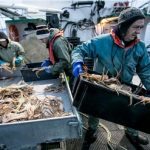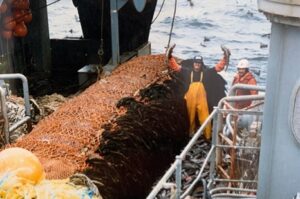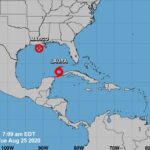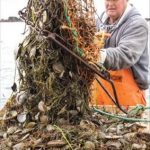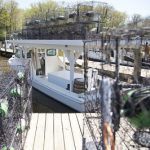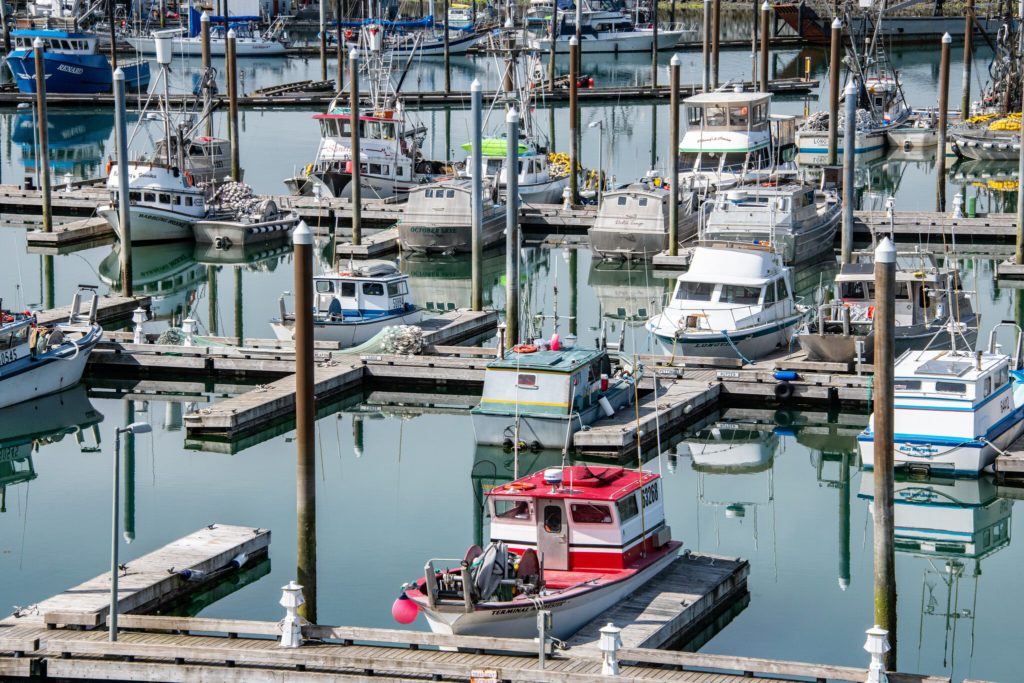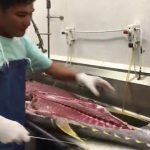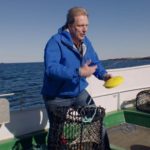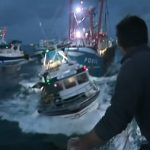Daily Archives: March 29, 2013
A Fish Story
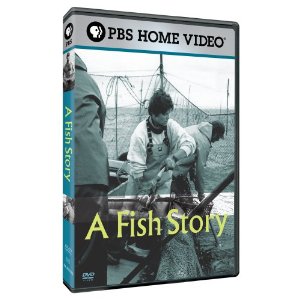 This documentary follows the plight of 2 commercial fishing families as they cope with falling fish stocks and increasing government regulation. This is a foundational expose of a relationship between
This documentary follows the plight of 2 commercial fishing families as they cope with falling fish stocks and increasing government regulation. This is a foundational expose of a relationship between enviro- opportunists and a certain type of fisherman. I will link this interesting and timely piece written by our own Dick Grachek, “CLF and CLF Ventures: or we get rich by litigating the hostile takeover and trading away of public resources for corporate exploitation while claiming to save the planet.” read the article and the video, A Fish Story
enviro- opportunists and a certain type of fisherman. I will link this interesting and timely piece written by our own Dick Grachek, “CLF and CLF Ventures: or we get rich by litigating the hostile takeover and trading away of public resources for corporate exploitation while claiming to save the planet.” read the article and the video, A Fish Story
This is also quite a read! Like I said. Timely!
From the Ocean and Coastal Law Journal – Cost/benefit of litigation in fishery management, Vol 7-1, 2001
http://mainelaw.maine.edu/academics/oclj/pdf/vol07_1/vol7_oclj_21.pdf
Ten Years After The Fall: Litigation And Groundfish Recovery In New England
Peter Shelley, Esq., Vice President, Conservation Law Foundation
Underwater Observations of Square Mesh 4-Panel Codends | HD
Published on Mar 19, 2013 Square Mesh 4-Panel Codends to reduce the discards of juvenile haddock taken in a trawl fishery off Cornwall. This work was Financed by the European Fisheries Fund (EFF) and carried out by Sea Fish Industry Authority at the request of a local fishermen who wanted to conserve juvenile haddock. Underwater video was taken of 2 different types of square mesh using a DSVR type recording system. This video shows that fishermen can reduce discards through voluntary use of conservation measures – like square mesh 4-panel codends. http://www.youtube.com/watch?v=uShjdHjPu6I
Canadian boat builder plans to expand to Eastport, creating 50 jobs
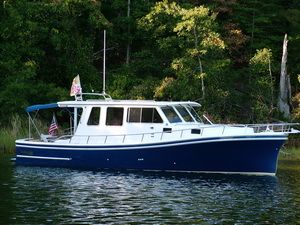 EASTPORT, Maine — A long-established Canadian boat-building firm is expanding its operations to the Washington County community of Eastport later this year, a project expected to create as many as 50 jobs. New Brunswick-based Millennium Marine has been building boats in Escuminac since the 1940s and now produces a line of custom-built fiberglass boats that range in hull size from 25 to 60 feet. continue reading
EASTPORT, Maine — A long-established Canadian boat-building firm is expanding its operations to the Washington County community of Eastport later this year, a project expected to create as many as 50 jobs. New Brunswick-based Millennium Marine has been building boats in Escuminac since the 1940s and now produces a line of custom-built fiberglass boats that range in hull size from 25 to 60 feet. continue reading
What’s Behind Spike in Gulf Coast Dolphin Attacks? psst,,, they say it’s you fishermen. The psychologist’s weigh in.
 NatGeo – According to a December report by the National Oceanic and Atmospheric Administration (NOAA), in 2012 three dolphins with gunshot wounds were found “stranded” (or washed ashore) along the Gulf Coast—the highest number since 2004. continue reading
NatGeo – According to a December report by the National Oceanic and Atmospheric Administration (NOAA), in 2012 three dolphins with gunshot wounds were found “stranded” (or washed ashore) along the Gulf Coast—the highest number since 2004. continue reading
Effort to unionize Maine lobstermen attracts 250 potential members
 STONINGTON, Maine — Lobstermen and union organizers are taking aim at an established industry group in an effort to form Maine’s first union for lobster harvesters. About 250 lobster harvesters have signed up for the union so far, and organizers have submitted an application for a charter with the International Association of Machinists and Aerospace Workers, or IAM. continue reading
STONINGTON, Maine — Lobstermen and union organizers are taking aim at an established industry group in an effort to form Maine’s first union for lobster harvesters. About 250 lobster harvesters have signed up for the union so far, and organizers have submitted an application for a charter with the International Association of Machinists and Aerospace Workers, or IAM. continue reading
Shortages send lobster prices up
WEST YARMOUTH — The bins in the display case at Cape Codder Seafoods were overflowing with glistening fresh fish, scallops and shellfish, a harvest from the deep waters off Georges Bank all the way down to the shallow bays of Falmouth. That abundance was not true of the lobster pools, which were populated by just a few specimens, huddled in the corners. continue reading
Proposed Offshore Long Island Wind Farm Threatens East Coast Scallop Fishery
![]() WASHINGTON — 29 March 2013 — The Fisheries Survival Fund (FSF), representing the majority of full-time Atlantic scallop limited access permit holders, submitted comments earlier this month on an unsolicited request by the New York Power Authority (NYPA) for a commercial wind energy lease approximately 12 miles offshore Long Island, New York. The proposed wind farm would overlap lucrative scallop grounds, creating major concerns for scallopers who routinely transit and conduct fishing operations in the area. Read the comments from the Fisheries Survival Fund
WASHINGTON — 29 March 2013 — The Fisheries Survival Fund (FSF), representing the majority of full-time Atlantic scallop limited access permit holders, submitted comments earlier this month on an unsolicited request by the New York Power Authority (NYPA) for a commercial wind energy lease approximately 12 miles offshore Long Island, New York. The proposed wind farm would overlap lucrative scallop grounds, creating major concerns for scallopers who routinely transit and conduct fishing operations in the area. Read the comments from the Fisheries Survival Fund
Your job is Dangerous. The public health of fishing vessel winches. (Seriously!)
 We in public health—and probably much of the public—tend to think that our field is about large-scale prevention and intervention efforts on behalf of the population’s well-being. Think anti-smoking laws and regulations, battles over soda size, and fights over the Affordable Care Act. But most of what public health does is, in fact, fairly mundane. It thinks about the ways our daily routines can either harm us or make us healthier— in our eating habits or in our jobs, for example—and then finding ways capitalize on that information. Take the fishing vessel winches. continue reading
We in public health—and probably much of the public—tend to think that our field is about large-scale prevention and intervention efforts on behalf of the population’s well-being. Think anti-smoking laws and regulations, battles over soda size, and fights over the Affordable Care Act. But most of what public health does is, in fact, fairly mundane. It thinks about the ways our daily routines can either harm us or make us healthier— in our eating habits or in our jobs, for example—and then finding ways capitalize on that information. Take the fishing vessel winches. continue reading
State House hearing on calamari shows importance of squid to R.I. economy
 Some 17.5 million pounds of annual squid landings valued at about $18 million makes squid the state’s most valuable commercial fishery, said R.I. Department of Environmental Management assistant director Robert Ballou. There are currently about 125 vessels in commercial squid fishery. continue reading
Some 17.5 million pounds of annual squid landings valued at about $18 million makes squid the state’s most valuable commercial fishery, said R.I. Department of Environmental Management assistant director Robert Ballou. There are currently about 125 vessels in commercial squid fishery. continue reading
Board of Fisheries adopts change to Kenai king escapement
The Board of Fisheries changed the escapement goal for late-run king salmon on the Kenai River March 21. The new escapement goal, which passed unanimously, is 15,000 to 30,000. The change is based on a change in sonar counters ![]() from split-beam to DIDSON. The board took up the Cook Inlet issue as part of its statewide finish meeting, held in Anchorage March 19 to 23. continue reading
from split-beam to DIDSON. The board took up the Cook Inlet issue as part of its statewide finish meeting, held in Anchorage March 19 to 23. continue reading
Letter to the Editor: NOAA system needs thorough overhaul – Susan Waller, Rockport, Ma.
![]() Three years ago, I watched a horrifying movie at Gloucester High School which showed fishermen having to throw overboard half, if not more, of everything they caught. They couldn’t even give away their bycatch to the needy — all those fish dead, overboard and doing nobody any good. continue reading
Three years ago, I watched a horrifying movie at Gloucester High School which showed fishermen having to throw overboard half, if not more, of everything they caught. They couldn’t even give away their bycatch to the needy — all those fish dead, overboard and doing nobody any good. continue reading
EPA requiring ships to better clean dumped ballast water that’s blamed for invasive species
![]() TRAVERSE CITY, Mich. — The Environmental Protection Agency has issued new requirements for cleansing ballast water dumped from ships, which scientists believe has provided a pathway to U.S. waters for invasive species that damage ecosystems and cost the economy billions of dollars. continue reading
TRAVERSE CITY, Mich. — The Environmental Protection Agency has issued new requirements for cleansing ballast water dumped from ships, which scientists believe has provided a pathway to U.S. waters for invasive species that damage ecosystems and cost the economy billions of dollars. continue reading
Editorial: Sound science? Maybe, but always read the fine print.
Spin is eternal. Always read the fine print. That’s the message that interested citizens should take from the Interior Department’s review of a scientific-integrity complaint by former Bureau of Reclamation official Paul Houser, a scientific-integrty officer who lost his job when he had the gall to do his job. continue reading Scientific integrity? It’s a fine slogan and guide, but it’s rarely the final word when it comes to government.
Maryland Electronic Crab Reporting Gaining Interest
ANNAPOLIS, Md. (AP) – Maryland crabbing industry officials say electronic harvest reporting is catching on. continue reading






 ,
, 


























